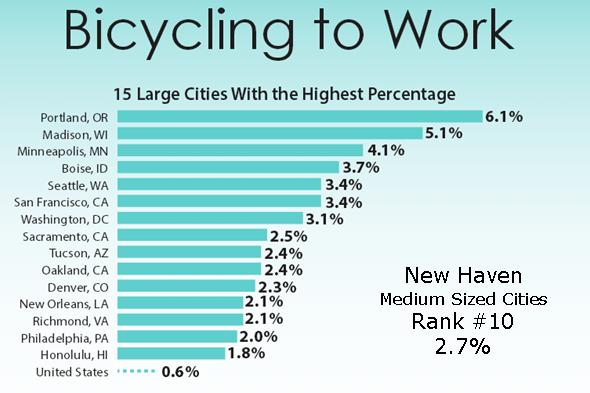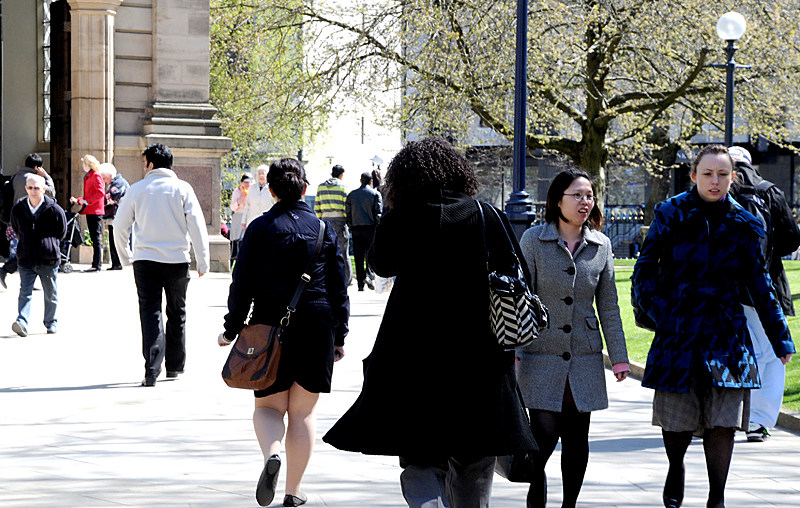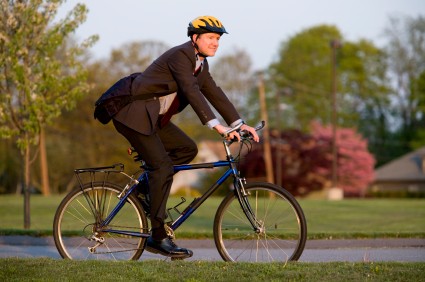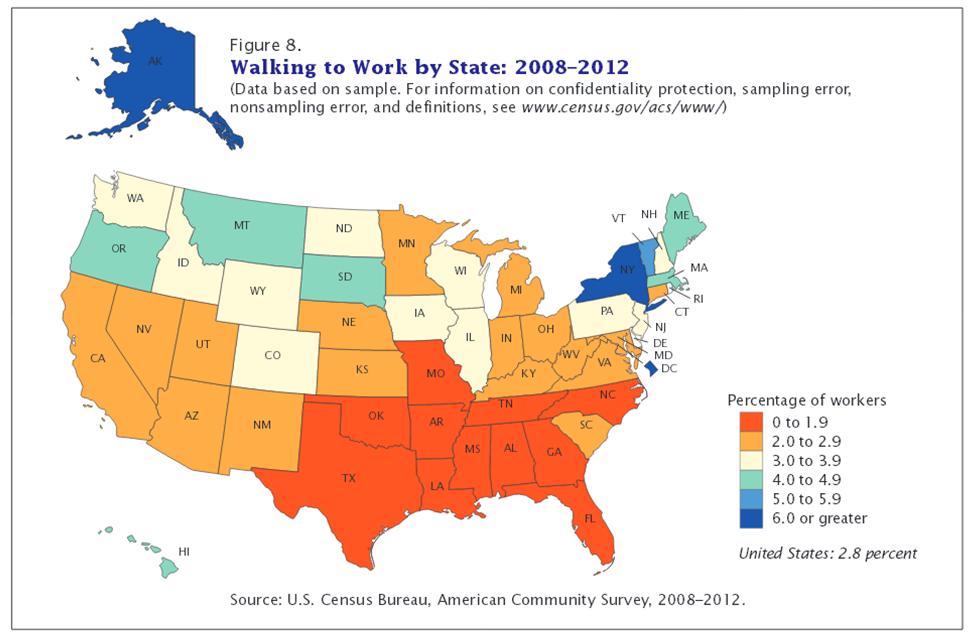More Bicycling, Walking to Work; New Haven Leads the Way in Connecticut
/Connecticut has the smallest percentage of people walking to work among states in the Northeast, and is one of two states with the smallest percentage of people who bicycle to work, according to newly released U.S. Census data. Nationwide, both walking and bicycling to work are on the rise.
Between 2000 and 2008–2012, the number of workers in the U.S. who traveled to work by bicycle increased by 60.8 percent, from about 488,000 in 2000 to about 786,000. This increase in the number of bicycle commuters exceeded the percentage increase of all other travel modes during that period, but the overall share of workers who commute b y bicycle remains low, according to the U.S. Census American Community Survey. In 1980, 0.5 percent of workers commuted by bicycle. This rate dropped to 0.4 percent in 1990, where it remained in 2000, before nudging upward in the latest survey.
y bicycle remains low, according to the U.S. Census American Community Survey. In 1980, 0.5 percent of workers commuted by bicycle. This rate dropped to 0.4 percent in 1990, where it remained in 2000, before nudging upward in the latest survey.
The 2008–2012 5-year data show that, among the approximately 140 million workers in the United States during that period, 2.8 percent walked to work and 0.6 percent commuted by bicycle, compared with 86.2 percent of workers who drove alone or carpooled to work.
 Among the nation’s medium sized-cities, (with p
Among the nation’s medium sized-cities, (with p opulations between 100,000 and 199,999) New Haven ranks at #5 with 12.4 percent walking to work and at #10 with 2.7 percent of the population using bicycles to get to work. Hartford ranks at #10 among the top walk-to-work medium sized cities with 8.2 percent, and did not reach the top 15 in bicyclists.
opulations between 100,000 and 199,999) New Haven ranks at #5 with 12.4 percent walking to work and at #10 with 2.7 percent of the population using bicycles to get to work. Hartford ranks at #10 among the top walk-to-work medium sized cities with 8.2 percent, and did not reach the top 15 in bicyclists.
The top medium-sized cities for percent of the population walking to work were Cambridge, Berkley, Ann Arbor, and Provo, just ahead of New Haven. The top bicycle-to-work medium sized cities were Boulder, Eugene, Berkeley, Cambridge, and Fort Collins.
The nation’s #1 walk-to-work city is Boston (15.1 percent) followed by Washington, Pittsburgh, New York, San Francisco and Madison. For bicycling to work, the top cities are Portland (6.1 percent), Madison, Minneapolis, Boise and Seattle.
The nationwide data indicates that:
- The combined rate of bicycle commuting for the 50 largest U.S. cities increased from 0.6 percent in 2000 to 1.0 percent in 2008–2012.
- The Northeast showed the highest rate of walking to work at 4.7 percent of workers, while the West had the highest rate of biking to work at 1.1 percent. The South had the lowest rate of biking and walking to work.
- Younger workers, those aged 16 to 24, had the highest rate of walking to work at 6.8 percent.
- At 0.8 percent, the rate of bicycle commuting for men was more than double that of women at 0.3 percent.
The percentage of workers age 16 and over who carpool to work is below 10 percent in each of Connecticut’s eight counties, with the exception of Windham County, at 10.5 percent.
Fairfield County has longest commute, most use of mass transit
The  average commute to work in Connecticut is about 25 minutes, ranging from 28 minutes in Fairfield County, 27 minutes in Litchfield County, 26 minutes in Windham County, 25 minutes in Middlesex County and Tolland County, to 24 minutes in New Haven County, 23 minutes in New London County, and 22 minutes in Hartford County.
average commute to work in Connecticut is about 25 minutes, ranging from 28 minutes in Fairfield County, 27 minutes in Litchfield County, 26 minutes in Windham County, 25 minutes in Middlesex County and Tolland County, to 24 minutes in New Haven County, 23 minutes in New London County, and 22 minutes in Hartford County.
The highest percentage of workers using public transportation to reach their place of employment each day is in Fairfield County, at 8.9 percent, more than double the percentage of the next highest county, New Haven County, at 4.1 percent.
The Census Bureau released a new commuting edition of the interactive map Census Explorer, which gives Web visitors easy click-and-zoom access to commuting statistics for every neighborhood in the U.S. It also shows how commuting has changed since 1990 at the neighborhood, county and state level — including how long it takes to get to work, commutes longer than an hour, and number of bikers. It uses statistics from the American Community Survey, the national source of commuting statistics down to the neighborhood level.





























